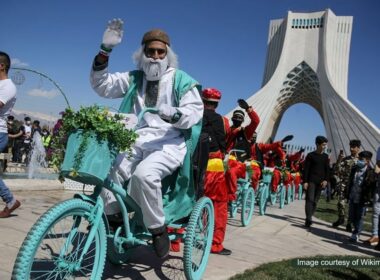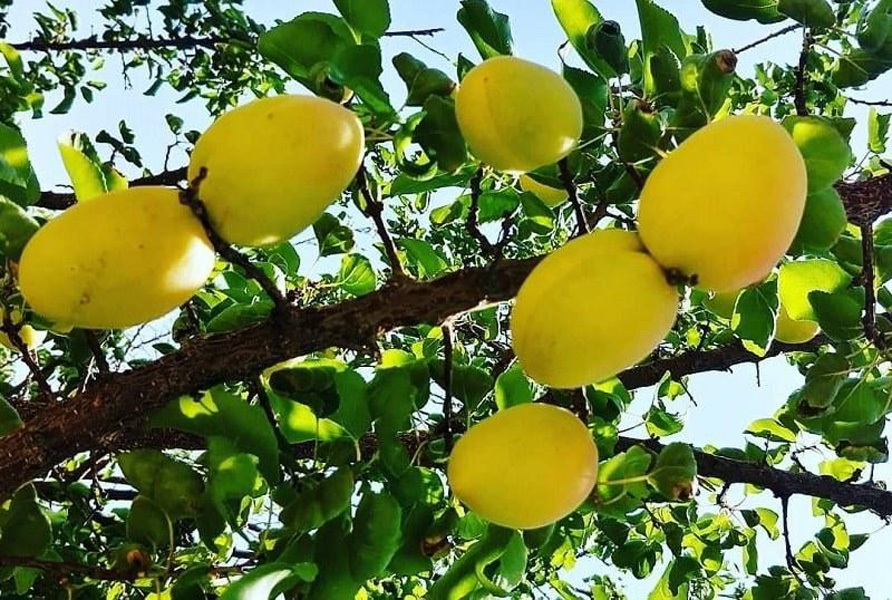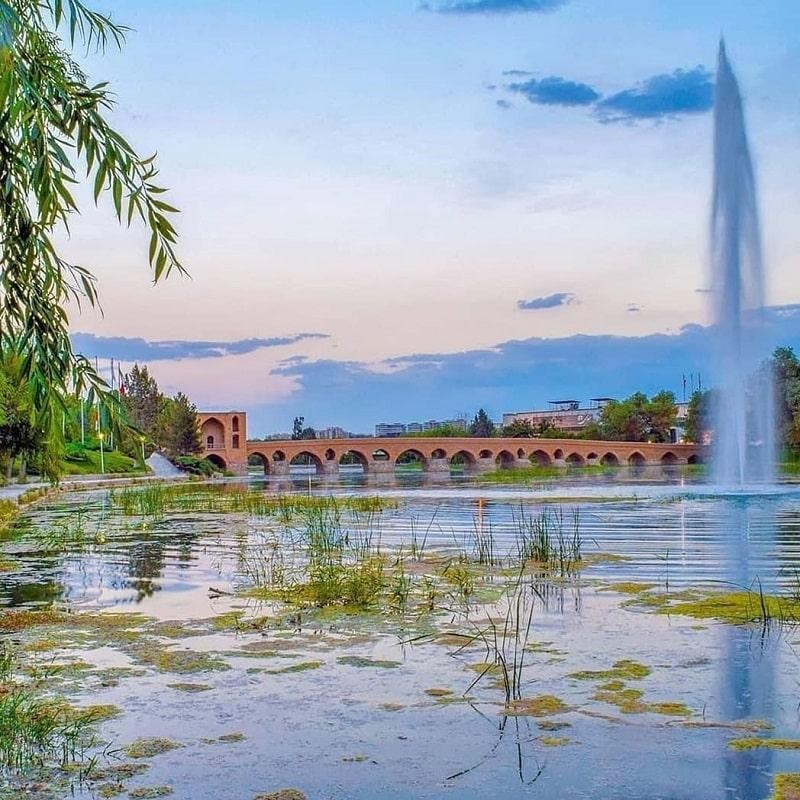
Isfahan, located in the center of Iran, is one of the important historical cities of Iran. The presence of Zayandeh Rud (River) in this city has given it particular recognition. Several bridges have been built on the Zayandeh Rud, which are examples of the architecture of our predecessors. Shahrestan Bridge of Isfahan is one of the oldest bridges built on the Zayandeh Rud.
Out of the bridges built over the Zayandeh Rud, we can mention the Khaju bridge, Choobi bridge, Si O Se Pol (Bridge), and Marnan bridge. Shahrestan Bridge is the last bridge on the path of Zayandeh Rud in the city. This bridge was registered on the Iran national heritage list in 1969.
Today it may seem strange that the river’s flow has been blocked. In actuality, the path of the river’s flow has been redirected, and the amount of water that now flows under the bridge and to a dead-end path is meant to preserve the structure and make the sight look natural.
Other Names of Isfahan Shahrestan Bridge and Its History
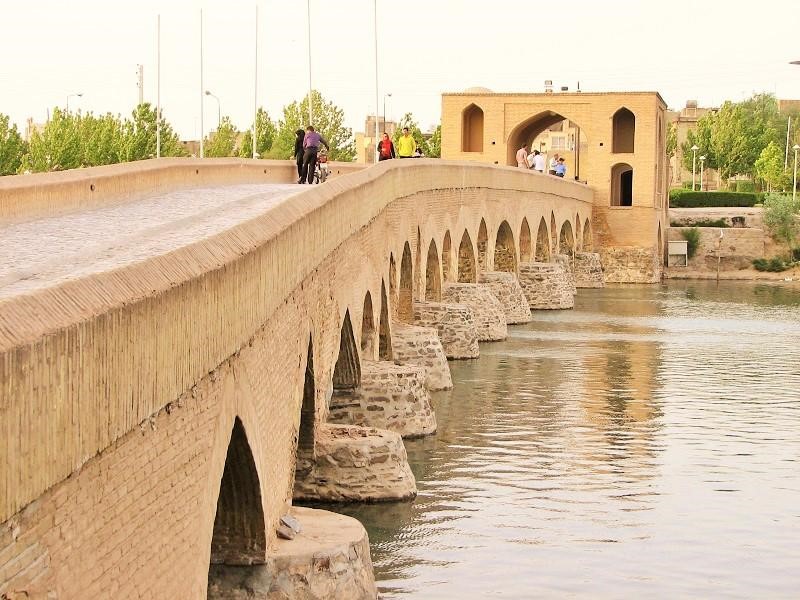
The flow of Zayandeh Rud in Isfahan has facilitated the establishment of many villages around it. There is a village to the east of Isfahan called Shahrestan. The name of the Shahrestan Bridge is derived from the name of this village.
Also, Isfahan was known as “Jay” in the past and even after Islam. It should be noted that the Shahrestan Bridge of Isfahan is also known as the Jay bridge. In addition, this bridge is also known as Jeser Hussein Bridge.
The Shahrestan bridge of Isfahan city dates back to the Sasanian period. Also, this bridge was restored in different periods, such as Buyid and Seljuk eras. Of course, the bridge has no inscriptions, and its history is assumed based on available evidence.
Out of all the bridges found on the Zayandeh Rud, the Shahrestan bridge is the only one in the city built before the Safavid era. The rest of the bridges were constructed in the Safavid period and later. This bridge was built in the Sasanian period and was the only existing bridge on Zayandeh Rud during the Buyid and Seljuk periods. The Shahrestan Bridge was constructed to connect the city to southern cities and villages.
Shahrestan Bridge of Isfahan was a military bridge as ancient as the bridges in Dezful and Shushtar. Many historical monuments around the bridge include the Jame Mosque of Jay, Al-Rashid Mausoleum, Old Castle of Isfahan, Sarouyeh or Kohandezh (Ancient Fort), and Hesar (wall) of Jay.
Features of Isfahan Shahrestan Bridge
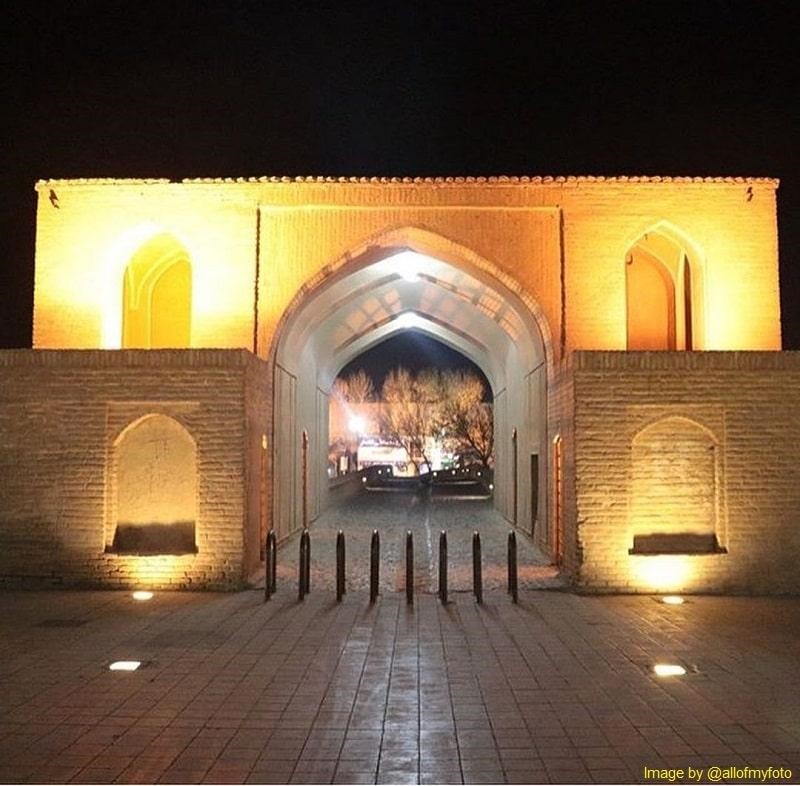
The location chosen for the bridge’s construction is a narrower part of the Zayandeh Rud. Constructing the bridge on a narrower area makes the bridge more stable and conserves materials. The foundations of the Shahrestan Bridge of Isfahan are laid on the natural stones of the river bed.
First, the rocky bed of the river is carved to build the foundations of the bridge. Then, foundations are created on the rocky bed using stone and Sarooj (traditional water-resistant cement) materials. This bridge has twelve large stone foundations and eleven waterspouts.
The springs of the Shahrestan Bridge have crescent vaults. The crescent vaults are made of bricks, and their pillars, like the foundations, are made of stone and Sarooj.
This bridge also has semicircular aqueducts and passages on its piers. The aqueducts of the bridge are placed in a circle on both sides. There are also structures called “Kaneh” on the Shahrestan Bridge. Kaneh is a hollow part of the structure designed to reduce the overall weight of the structure.
There is a building at the northern end of the bridge. This building is called Rahdarkhaneh (toll-house), and it was used to monitor the entry and exit of caravans and passengers in the past.
The toll house in the northern part was effectively the gate of the Shahrestan Bridge. The materials used in this building are adobe and clay.
The Isfahan Shahrestan Bridge is about 105 meters long and 4.25 to 5 meters wide. The length of the bridge extends from its round brick pillar to the old stone pavement. The course of the bridge slightly deviates in the north-south direction. Also, the central part of the bridge has a slight decline on both sides.
The Shahrestan Bridge was designed for the passage of vehicles and pedestrians. Currently, the top part of the bridge, which was the vehicular passage, has been destroyed, and only pedestrians can use it.
Don’t Miss Visiting This Historic Bridge
With the presence of Zayandeh Rud, The city of Isfahan is considered one of the most important tourist destinations of Iran. The bridges built on this river have boosted its beauty and tourism value. The bridges of Zayandeh Rud, especially the Shahrestan bridge of Isfahan, are among the historical monuments of this city.
Every year many tourists from inside and outside the country travel to this city to visit the historical buildings of Isfahan. You can travel to this city personally or with an Iran tour package.
If you are interested in tourism and are keen to walk along a beautiful riverbank and enjoy its sights, Destination Iran recommends Isfahan city. We wish you a unique experience when you travel to this city and walk on the oldest bridge in Isfahan.
Where is the Isfahan Shahrestan Bridge?
The Shahrestan Bridge is at the far east of the Zayandeh Rud (river) in Isfahan city. This bridge is located in the old Jay neighborhood or the village of Shahrestan, east of Isfahan city. You can see the exact location of this bridge below:
Frequently Asked Questions About Isfahan Shahrestan Bridge
If you cannot find the answer to your questions below, share your questions with us through the comments section of this post. We will answer them as soon as possible.
How old is the Shahrestan Bridge of Isfahan?
Based on the available evidence, the Shahrestan Bridge was built in the Sasanian period. After that, it was restored during the Seljuk and Buyid periods.
What are the other names of the Shahrestan Bridge of Isfahan?
Isfahan Shahrestan Bridge is also known as Jay and Jeser Hussein bridge.
What was the function of the Isfahan Shahrestan Bridge?
This bridge was originally built to commute travelers from the south of Isfahan and to connect the city to its southern villages. The room on the bridge’s north side was designed to collect tolls from travelers and merchants. In addition, this bridge also had military uses.
What is the current condition of the Shahrestan Bridge?
Due to the redirection of the river path in front of the Isfahan International Exhibition, the river flow no longer passes this bridge. However, with the installation of a water inlet valve, the piers of the bridge are submerged in water for preservation.


